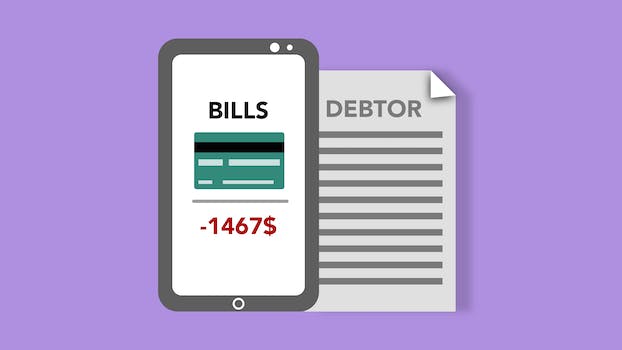How Can I Save Money For Retirement
Introduction

Saving money for retirement is an important financial goal that everyone should consider. It is never too early or too late to start saving for retirement. By planning and saving early, you can ensure a comfortable and financially secure retirement. In this article, we will discuss some tips on how to save money for retirement.
Maximizing Your 401(k) Contributions
As we approach retirement age, it’s natural to start thinking about how we can save money for our golden years. One of the most popular ways to do this is by contributing to a 401(k) plan. A 401(k) is a retirement savings plan offered by many employers that allows employees to contribute a portion of their pre-tax income to a retirement account. The money in the account grows tax-free until it is withdrawn in retirement.
Maximizing your 401(k) contributions is one of the best ways to save money for retirement. Here are some tips to help you make the most of your 401(k) plan:
1. Contribute as much as you can afford
The more you contribute to your 401(k) plan, the more money you will have in retirement. If your employer offers a matching contribution, try to contribute at least enough to get the full match. For example, if your employer matches 50% of your contributions up to 6% of your salary, you should contribute at least 6% of your salary to get the full match.
2. Increase your contributions over time
If you can’t afford to contribute the maximum amount to your 401(k) plan right away, start with a smaller amount and increase it over time. Many 401(k) plans allow you to set up automatic contribution increases, so you can gradually increase your contributions without even thinking about it.
3. Take advantage of catch-up contributions
If you are over 50 years old, you can make catch-up contributions to your 401(k) plan. In 2021, the catch-up contribution limit is $6,500. This allows you to save even more money for retirement in the years leading up to your retirement.
4. Consider a Roth 401(k) option
Some employers offer a Roth 401(k) option, which allows you to contribute after-tax dollars to your retirement account. The money in a Roth 401(k) grows tax-free and can be withdrawn tax-free in retirement. This can be a good option if you expect to be in a higher tax bracket in retirement than you are now.
5. Review your investment options
Most 401(k) plans offer a variety of investment options, such as mutual funds, target-date funds, and individual stocks. It’s important to review your investment options and choose investments that align with your retirement goals and risk tolerance. Consider working with a financial advisor to help you make informed investment decisions.
In conclusion, maximizing your 401(k) contributions is a key part of saving money for retirement. By contributing as much as you can afford, increasing your contributions over time, taking advantage of catch-up contributions, considering a Roth 401(k) option, and reviewing your investment options, you can make the most of your 401(k) plan and set yourself up for a comfortable retirement. Remember, it’s never too early or too late to start saving for retirement, so start today and watch your savings grow over time.
Creating a Budget and Sticking to It
As we approach retirement age, it’s important to start thinking about how we can save money for our golden years. Retirement can be a time of relaxation and enjoyment, but it can also be a time of financial stress if we haven’t planned ahead. One of the most important steps we can take towards a secure retirement is creating a budget and sticking to it.
Creating a budget may seem daunting at first, but it’s a crucial step towards financial stability. The first step is to determine your monthly income. This includes any salary or wages, as well as any other sources of income such as rental properties or investments. Once you have a clear picture of your income, it’s time to start tracking your expenses.
Start by listing all of your monthly expenses, including rent or mortgage payments, utilities, groceries, transportation, and any other bills or expenses you have. It’s important to be as thorough as possible when creating this list, as even small expenses can add up over time. Once you have a complete list of your expenses, it’s time to start categorizing them.
Divide your expenses into categories such as housing, transportation, food, entertainment, and savings. This will help you see where your money is going each month and identify areas where you can cut back. For example, if you’re spending a lot of money on dining out or entertainment, you may want to consider cutting back in those areas and putting that money towards your retirement savings.
Once you have a clear picture of your income and expenses, it’s time to start setting goals for your retirement savings. A good rule of thumb is to aim to save at least 15% of your income each month towards retirement. This may seem like a lot, but it’s important to start saving as early as possible to take advantage of compound interest and give your savings time to grow.
To make saving easier, consider setting up automatic contributions to your retirement accounts. Many employers offer 401(k) plans or other retirement savings options that allow you to automatically contribute a portion of your paycheck each month. If your employer doesn’t offer a retirement plan, consider opening an individual retirement account (IRA) or other investment account to start saving for retirement.
Sticking to your budget and saving for retirement can be challenging, but it’s important to stay motivated and focused on your goals. Consider tracking your progress each month and celebrating small milestones along the way. You may also want to consider working with a financial advisor or planner to help you create a personalized retirement plan and stay on track towards your goals.
In conclusion, creating a budget and sticking to it is a crucial step towards saving for retirement. By tracking your income and expenses, setting goals for your savings, and staying motivated and focused on your goals, you can take control of your finances and enjoy a secure and comfortable retirement.
Investing in Low-Cost Index Funds
As we approach retirement age, it’s natural to start thinking about how we can save money for our golden years. One of the most effective ways to do this is by investing in low-cost index funds.
Index funds are a type of mutual fund that tracks a specific market index, such as the S&P 500. By investing in an index fund, you’re essentially buying a small piece of every company in that index. This provides diversification, which can help reduce risk and increase returns over the long term.
One of the main advantages of index funds is their low cost. Because they simply track an index, they don’t require the same level of active management as other types of funds. This means that they have lower fees and expenses, which can eat into your returns over time.
Another advantage of index funds is their simplicity. They’re easy to understand and require very little maintenance. Once you’ve invested in an index fund, you can sit back and let it do its thing. This makes them a great option for those who don’t have the time or expertise to actively manage their investments.
Of course, like any investment, there are risks associated with index funds. Because they track a specific index, they’re subject to the ups and downs of that market. However, over the long term, the stock market has historically provided solid returns. By investing in a diversified portfolio of index funds, you can help mitigate some of this risk.
So, how can you get started with investing in low-cost index funds? The first step is to open a brokerage account. There are many online brokers that offer low-cost index funds, such as Vanguard, Fidelity, and Charles Schwab. Do your research and find a broker that offers the funds you’re interested in at a low cost.
Once you’ve opened your account, it’s time to start investing. One strategy is to invest in a target-date fund, which is a type of index fund that automatically adjusts its asset allocation as you get closer to retirement. This can help ensure that your investments are appropriately balanced based on your age and risk tolerance.
Another strategy is to invest in a mix of index funds that track different markets, such as domestic stocks, international stocks, and bonds. This can provide even greater diversification and help reduce risk.
It’s important to remember that investing in index funds is a long-term strategy. The stock market can be volatile in the short term, but historically it has provided solid returns over the long term. By investing consistently and staying the course, you can help grow your retirement savings over time.
In conclusion, investing in low-cost index funds is a great way to save money for retirement. They offer diversification, low fees, and simplicity, making them a great option for those who want to invest but don’t have the time or expertise to actively manage their investments. By doing your research, opening a brokerage account, and investing consistently over the long term, you can help ensure a comfortable retirement.
Delaying Social Security Benefits
As we approach retirement age, many of us start to worry about whether we have saved enough money to support ourselves in our golden years. One strategy that can help us stretch our retirement savings further is to delay taking Social Security benefits.
Social Security benefits are a critical source of income for many retirees. However, the age at which you start taking benefits can have a significant impact on the amount of money you receive each month. If you start taking benefits at age 62, for example, you will receive a reduced benefit amount for the rest of your life. On the other hand, if you delay taking benefits until age 70, you will receive a higher monthly benefit amount.
Delaying Social Security benefits can be a smart financial move for several reasons. First, it can help you maximize your retirement income. By delaying benefits, you can increase the amount of money you receive each month, which can help you cover your expenses and maintain your standard of living.
Second, delaying benefits can help you stretch your retirement savings further. If you start taking benefits at age 62, you may need to dip into your savings to cover your expenses. However, if you delay benefits until age 70, you can reduce the amount of money you need to withdraw from your savings each month, which can help your savings last longer.
Third, delaying benefits can help you hedge against inflation. Social Security benefits are adjusted each year to keep pace with inflation. By delaying benefits, you can increase the base amount of your benefit, which means that your annual cost-of-living adjustments will be higher as well.
Of course, delaying Social Security benefits is not the right choice for everyone. If you need the money to cover your expenses, or if you have health issues that may shorten your life expectancy, it may make sense to start taking benefits earlier. However, if you are in good health and have other sources of income to cover your expenses, delaying benefits can be a smart financial move.
If you are considering delaying Social Security benefits, there are a few things you should keep in mind. First, you will need to have other sources of income to cover your expenses while you wait for your benefits to increase. This may include savings, a pension, or income from a part-time job.
Second, you will need to be patient. Delaying benefits can be a long-term strategy, and it may take several years before you start to see the benefits of your decision. However, if you are willing to wait, the increased benefit amount can be well worth it.
Finally, you will need to do some careful planning to make sure that delaying benefits makes sense for your individual situation. This may involve working with a financial planner or using online tools to estimate your Social Security benefits and compare different scenarios.
In conclusion, delaying Social Security benefits can be a smart financial move for retirees who want to maximize their retirement income, stretch their savings further, and hedge against inflation. However, it is not the right choice for everyone, and it requires careful planning and patience. If you are considering delaying benefits, be sure to do your research and consult with a financial professional to make sure that it makes sense for your individual situation.
Downsizing Your Home and Lifestyle
As we approach retirement age, many of us start to worry about whether we have saved enough money to support ourselves in our golden years. One way to ensure that we have enough money to live comfortably is to downsize our homes and lifestyles.
Downsizing your home can be a great way to save money for retirement. If you are living in a large home with multiple bedrooms and bathrooms, you may be paying more than you need to in mortgage payments, property taxes, and utility bills. By downsizing to a smaller home or apartment, you can reduce these expenses and put the money you save towards your retirement savings.
In addition to downsizing your home, you may also want to consider downsizing your lifestyle. This means cutting back on unnecessary expenses like eating out, buying expensive clothes, and taking expensive vacations. By living a simpler lifestyle, you can save money and put it towards your retirement savings.
Of course, downsizing your home and lifestyle can be a difficult decision to make. Many of us have emotional attachments to our homes and the things we own. However, it is important to remember that downsizing does not mean giving up everything you love. It simply means making some changes to your lifestyle in order to save money for your future.
If you are considering downsizing your home and lifestyle, there are a few things you can do to make the process easier. First, start by making a list of all the things you own and decide which items are essential and which ones you can live without. This will help you to declutter your home and make it easier to downsize.
Next, consider hiring a professional organizer or downsizing specialist to help you with the process. These professionals can provide valuable advice and support as you make the transition to a smaller home and lifestyle.
Finally, be sure to talk to your family and friends about your decision to downsize. They may have valuable insights and advice to offer, and they can also provide emotional support as you make this important life change.
In conclusion, downsizing your home and lifestyle can be a great way to save money for retirement. By reducing your expenses and living a simpler life, you can put more money towards your retirement savings and ensure that you have enough money to live comfortably in your golden years. While downsizing can be a difficult decision to make, it is important to remember that it does not mean giving up everything you love. With the right mindset and support, downsizing can be a positive and rewarding experience.
Conclusion
To save money for retirement, it is important to start early, create a budget, and invest in retirement accounts such as 401(k)s or IRAs. It is also important to regularly review and adjust your retirement savings plan as needed. By taking these steps, individuals can ensure they have enough money saved to support themselves during their retirement years.







